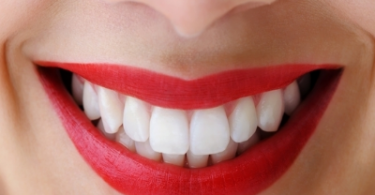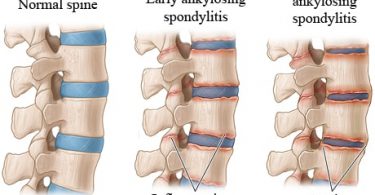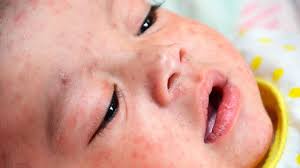Abstract: Chikungunya fever is caused by an alphavirus that is spread by mosquito bites from the Aedes aegypti mosquito. After an incubation period, there is a sudden onset of flu-like symptoms including a severe headache, chills, fever, joint pain, backache, nausea, vomiting and petechial or maculopapular rash usually involving the limbs and trunks. One attack confers life long immunity i.e. fixed miasmatic disease. The effects and symptoms produced by any bacteria or virus depends on the susceptibility of the individual, so a healthy individual does not readily become infected in spite of being exposed. During any epidemic or endemic, only a small portion of the population becomes affected. According to homeopathic principles, a composite picture of the epidemic sickness will reveal the remedy for the epidemic under consideration as preventive and curative – the Genus epidemic us. Other medicines had also been required according to the similarity of symptoms of the medicine with manifestation of the individual. My experiences revealed Calcarea carbonica as the genus epidemicus during last episode of attack in 2007 -2008, in West Bengal, India.
Keywords:
Introduction
The Chikungunya epidemic was first reported in India in 1963 where it had infected millions of people in Maharashtra, Karnataka, Tamil Nadu, Andhra Pradesh, Kerala, West Bengal and some other states. During 2006 to 2008, the Chikungunya virus was highly infective and disabling but is not transmissible between people. The name is derived from the Makonde word meaning “that which bends up”, in reference to the stooped posture developed as a result of the arthritic symptoms of the disease.
French researchers claim that viral strains isolated from Reunion and the SeycheIles clearly show a mutation from its East and Central African origin, the reason for its associated widespread outbreak. There has been a specific amino acid mutation in E1 gene of the virus making it more deadly. Chikungunya (also known as Chicken Guinea is a relatively rare form of viral fever resembling dengue fever, caused by alphavirus.
Epidemiology
Chikungunya was first described in Tanzania, Africa in 1952 following an outbreak on the Makonde plateau. The disease was first described by Marion Robinson and W.H.R. Lumsden. In 2006, there was a big outbreak in the Andhra Pradesh region and some other states in India. In 2007 there was a large outbreak in West Bengal also affecting thousands of people. Some deaths have been reported but it was thought to be mainly due to hazardous treatment and secondary infection. As this virus can cause thrombocytopenia, injudicious use of inappropriate drugs can cause erosions in the gastric epithelium leading to upper GI bleeding (due to thrombocytopenia) and may endanger life.
The National Institute of Virology (NIV) in Pune says that this latest strain in India is different from that which was found during 1963 (the first outbreak in India which was recorded in Calcutta) and the 1974 epidemic, but 98% similar to the one found in Reunion. The NIV claims the new out- break is from the African genotype introduced to India 5 years ago. More seropositivity is found among the age group between 1-55 years.
Chikungunya fever is caused by the Chikungunya virus. They are spherical enveloped virions, 60nm in diameter and have a single stranded positive sense RNA genome.
The Chikungunya virus is spread by mosquito bites from the Aedes aegypti mosquito. Mosquitoes become infected when they feed on a person infected with the Chikungunya virus. Monkeys, and possibly other wild animals, may also serve as reservoirs of the virus. Infected mosquitoes can then spread the virus to other humans when they bite. Aedes aegypti (the yellow fever mosquito), a household contained breeder and aggressive daytime biter which is attracted to humans, is the primary vector of the virus to humans. Aedes albopictus (the Asian tiger mosquito) may also play a role in human transmission in Asia.
Clinical features
After an incubation period of 3-12 days there is a sudden onset of flu-like symptoms including a severe headache, chills, fever (>40°C, 104°F), joint pain, backache, nausea, vomiting, and a petechial or maculopapular rash usually involving the limbs and trunks. Migratory polyarthritis mainly affects the small joints of the hands, wrists, ankles and feet with lesser involvement of the larger joints. Joints of the extremities in particular become swollen and painful to the touch. Haemorrhage is rare. There can also be headache, conjunctival infection and slight photophobia. Redness of eyes may be the first symptom. There may be difficulty in looking upwards. The joint pain, intense headache, insomnia and an extreme degree of prostration lasts for a variable period, usually for about 5 to 6 days.
The best way to avoid CHIK Virus infection is to prevent mosquito bites. There is no vaccine or preventative drug apart from some homeopathic medicines.
Immunity
One attack confers lifelong immunity.
Investigations
A few patients develop leucopenia, elevated levels of aspartate aminotrans- ferase (AST) and C-reactive protein. There may be a mild decrease in platelet counts.
Diagnosis
The diagnostic tests include detection of antigens or antibodies in the blood, using ELISA (or EIA – enzyme immunoassay) or molecular techniques like polymerase chain reaction (PCR). The antibodies detected by serological assays like ELISA require an IgM capture assay to distinguish it from dengue fever.
Complications
• Superadded infection with bacteria
• Meningoencephalitis
• Death may occur in immune compromised patients
• Myocarditis
• Pneumonias
Complications were observed due to injudicious application of certain anti-inflammatory drugs (as reported by www.chikungunya.co.uk)
Prevention
The best way to avoid CHIK Virus infection is to prevent mosquito bites. There is no vaccine or preventative drug apart from some homeopathic medicines.
• Use insect repellent
• Wear long sleeves and pants
• Have secure screens on windows and doors to keep mosquitoes out
• Get rid of mosquito breeding sites by emptying standing water from flower pots, buckets
Change the water in pet dishes. Drill holes in tire swings so water drains out. Keep children’s wading pools empty when A person with Chikungunya fever should limit their exposure to mosquito bites. The patient should stay indoors under a mosquito net in order to avoid further spreading of the infection.
Homoeopathic Approach
Homeopathic prophylaxis had its beginnings with the father of Homoeopathy, Dr Samuel Hahnemann (1755 -1842). During a 1799 scarlet fever outbreak in Germany, Dr Hahnemann served that three children in a family contracted the disease, but the fourth remained unaffected. The fourth had been treated homoeopathic Belladonna for an unrelated joint problem. Dr Hahnemann reasoned that perhaps the dose of Belladonna had protected the child from scarlet fever as well as treated the joint affliction. Soon afterwards, he was able to test his theory when in another of his patient’s family of eight contracted scarlet fever. Hahnemann administered homoeopathic Belladonna to the remaining unafflicted five, and all five remained symptom free. Hahnemann continued using Belladonna during this epidemic, and soon conventional physicians took note and began using the same protocol.
As per the guidelines laid down by Dr Samuel Hahnemann in the Organon, a Genus epidemicus has to be found out in the specific area and it could be the best prophylactic remedy.
According to our master in aphorism 102, a carefully observing physician can, from the examination of the first and second patients, arrive so nearly at knowledge of the true state of the epidemic and can even find a suitable homoeopathic remedy for it. The distinguishing characteristic of any epidemic/pandemic/endemic sickness will be secured in the composite image of the totality of symptoms of several patients of different bodily constitution. This composite picture of the epidemic sickness will reveal the remedy for that epidemic and can subsequently be used as a preventative in an out-break.It would reduce the death rate, controI it, and thus provide a scope to every homeopath to fulfill his mission by being of genuine public service in every epidemic.
Chikungunya fever is usually self-limiting and will resolve with time.Symptomatic treatment is recommended after excluding other more dangerous diseases. Supportive care with rest is indicated during the acute joint symptoms. Homeopathy has a very good scope in the treatment of Chikungunya. Initially indicated acute remedies may give relief which may be followed by the constitutional remedy in order to get rid of post fever arthralgia. Moreover, as per immunity status it may be considered as a fixed miasmatic disease in life.
Chikungunya – A fixed miasmatic disease
J.T Kent beautifully defines an acute misam as “one that comes upon the economy, passes through its regular prodromal period, longer or shorter, has its period of progress and period of decline, and in which there is a tendency to recovery.” Our master asserted about fixed miasm in aphorism 46 as, ” … Many examples might be adduced of diseases which, in the course of nature, have been homeopathically cured by other diseases presenting similar symptoms, were it not necessary, as our object is to speak about something determinate and indubitable, to confine our attention solely to those (few) diseases which are invariably the same, arise from a fixed miasm, and hence merit a distinct name. Among these the smallpox, so dreaded on account of the great number of its serious symptoms, occupies a prominent position, and it has removed and cured a number of maladies with simi- lar symptoms.”
He also stated in aphorism 73 as “Thence arise fevers, in each instance of a peculiar nature, and, because the cases of disease have an identical origin, they set up in all those they affect an identical morbid process, which when left to itself terminates in a moderate period of time in death or recovery … Sometimes they are peculiar acute miasms which recur in the same manner (hence known by some traditional name), which either attack persons but once in a lifetime, as the smallpox, measles, whooping-cough, the ancient, smooth, bright red scarlet fever”.
As chikungunya only Occurs once in a life time, has the capacity to abate long standing chronic disease, and if not treated properly may leave sequelae, it may be considered as a fixed miasmatic disease and deserve special consideration.
My experiences with Chikungunya and homoeopathy:
My first observation was a male patient, aged 42, who suffered from an itching skin eruption for 8 years. This eruption abated following an attack of chikungunya. When I processed data on this aspect, it revealed that among 12 patients having suffered different types of a long standing itching skin eruption, in 9 cases the eruption abated after an attack of this type of fever, irrespective of the mode of treatment adopted.
During the last two years (2007 – 2008) I had the opportunity to treat hundreds of chikungunya patients every week in Kolkata and in North 24 Parganas District of West Bengal, India. Those who had not been treated by other schools improved with homeopathic medicines within a short period of time, almost all without sequelae. Patients who had a history of taking antibiotics, anti-inflammatory drugs, or partially indicated homeopathic medicines, improved but took time and recovered very slowly. Most of the older patients suffered a lot from arthralgia, profound weakness and loss of appetite for a considerable time.
For new cases I made a plan with the following analogy. In any acute disease we commonly consider exciting factors, location, sensation, modalities and concomitants as the key factors for prescription. In chikungunya, there is no significant peculiar exciting factor (as it is a vector borne disease), location and sensation is a common manifestation, and concomitants, if present, may point to the correct remedy. Moreover this is a fixed miasmatic disease, so disease phenomena is very important for selection of the remedy.
Important rubrics considered from Boger-Boenninghausen Repertory
[Heat and Fever In General] Concomitants: Back: Lumbar region, pain in
[Heat and Fever In General] Concomitants: Upper extremities: Upper extremities: Joints, pain in
[Heat and Fever In General] Concomitants: Upper extremities: Upper extremities: Pain in general
[Heat and Fever In General] Con- comitants: Lower extremities: Pain in general:
Repertorial result reveals that CALC, Nux, PuIs, Rhus-t, Ars, and Sep are the leading remedies.
Calcarea carbonica as the remedy for fresh cases of Chikungunya
Patients who were prescribed Calcarea carbonica based on acute totality, recovered within three days [104 o F dropped to 98 oF] , developed almost no sequelae except weakness for another two or three days, and did not suffer from loss of appetite. In selected cases according to similarity of symptoms Nux, Puls, Ars even Sep may be needed. Fortunately these medicines are complimentary to or follow well in their relationship with Calc. In some cases Rhus-t seems to be the remedy in the first stage and to some extent may control the symptoms, but relapses occur. In these cases Calc complement and complete the case.
Let us have a look at the fever symptoms of Calc in Hering’s Guiding Symptoms:
• Hectic fever: with alternate chills and heat; frequent attacks of flushes of heat, with anguish and palpitation of heart, or constant shuddering in evening, with red cheeks; skin dry, withered; sweats easily; great debility. Pains in shoulders, with fever.
• Pain in between shoulders and in lower part of back; in shoulders, with fever; in r. wrist joint, as from a sprain; in hands; in tendo- achilles; as if beaten in upper arms and middle of thighs; at roots of hair; shoots into ears and head; in upper jaw.
• Tearing in limbs. Pain as if beaten in upper arms and middle of thighs, when ascending stairs. Heaviness and painful weight in limbs and great fatigue on walking. Great weakness and weariness of all limbs, especially in feet, lasting till she goes to bed. Shooting pains throughout limbs, both upper and lower; he began to imagine he was going to have rheumatic fever;finger joints became much swollen.
Indications of some other commonly used Homeopathic medicines for Chikungunya
Eupatorium perfoliatum: Aching bone pain in the limbs and muscles with fever. There may pain. Aching pain in bones of extremities with soreness of flesh, great thirst with tendency to vomiting and chilliness during drinking, perspiration relieves all symptoms except headache.
Gelsemium sempervirens:
Associated with severe headache and coryza. Thirstlessness, slow pulse, muscular pains. There May be drowsiness, dullness and dizziness.
Rhus toxicodendron: Fever with restlessness, polyarthritis and maculopapular rashes. Thirst not satisfied with drinking. Pain and stiffness in joints < first motion> continued motion if possible.
Bryonia alba: Fever with aching in every muscle. Dry mouth with excessive thirst, knees stiff and
Painful. Bursting, splitting headache. Joints pale but swollen and hot with stitching and tearing pain. All symptoms < by motion and> absolute rest.
Arsenicum album: Restlessness and anxiety with fear of death during fever. Weakness out of proportion to the condition. Unquenchable thirst nausea and vomiting immediately taking water or food. Fever paroxysm at midday or midnight.
Pulsatilla nigricans: Fever with chilliness but burning in Iegs, and fear of death only during fever. Thirstless- and wandering joint pains.
Chinchona officinalis: Pain in the limbs and joints as if sprained < slight touch >hard pressure. Swollen joints. Debilitating night sweats. Anorexia after recovery be cured with single dose.
Belladonna: High fever with burning heat. No thirst with fever. Joints swollen red, shining with red streaks radiating. Heat, redness, throbbing and burning.
Pyrogenium: Septic fevers, temperature rises rapidly, but not proportionate to pulse. Great heat with profuse sweat that does not cause a fall in temperature. Aching in limbs and bones. Pain on first motion is not so severe as in Rhus tox.
Nux Vomica: Fever with chilliness. Joint pain in both limbs especially joints. Irritability associated with nausea and vomiting, and ineffectual urging for stool.
Conclusion
Health education and awareness is mandatory to prevent prevalence of chikungunya . Homeopathic mode of treatment deserves special significance both as a preventative and curance measure. From my experiences in fresh cases of chikungunya, Calc works as the most effective similimum ( about 70% of cases) either singly or related medicines like Nux, Puls, Rhus-t or Ars. I do request that fellow homeopaths collect data on any cases chikungunya they encounter that serve to confirm my experience, so that this may be shared with others.
Cases that have a history of treatment with allopathy or even with partially indicated homeopathic medicines for a considerable period usually present as a complex case and may thus re- quire other medicines as per its acute totality. But in every case, in order to get rid of remote effect of Chikungunya, treatment should be concluded with a suitable anti-psoric medicine like SuI, Calc, etc. To remove the ob- stacles to recovery from this fixed miasmatic disease as ‘Never well since chikungunya’ may be ruled out with Pyrogen, Calc, Carb-v, etc.
Bibliography
1. Allen T.F. – Encyclopedia of Pure Materia Medica, Boericke &Tafel, New-York, 1879.
2. Basu Biswajit-Phenomenological study of Thyroidinum, Homoeopathic Herritage;Vol33,No 12, B.Jain Pub Pvt.Ltd.New Delhi December,2008.
3. Boger CM. – Boenninghausen Characteristic & Reperto~y,2nd Edn,B.Jain pub New Delhi,2002
4. Boenninghausen – Therapeutic pocket Book. B. Jain Pub Pvt. Ltd. New Delhi, 1993
5. Clarke J.H -Dictionary of practical Materia Medica. B.Jain Pub. Pvt. Ltd. New Delhi, 1990
6. Hahnernann.S – The Chronic Diseaes, their peculiar Nature and Their Homoeopathic cure; B.Jain Publishers Pvt. Ltd,New Delhi. India, 1987
7. Hahnemann. S. Organon of Medicine ; 5th. and 6th. Edn. translated by Dugeon, B.Jain publishers Ltd, New Delhi. India.1994
8. Harrison’s -Principles of Internal Medicine, 17th Edn,lnternational edn, 2008
9. Hering C – Guiding Symptoms of Our Materia Medica. B. Jain Pub Pvt. Ltd. New Delhi, 1993
10. Kent James Tyler- Lectures on Homoeopathic Philosophy. B. Jain Pub Pvt. Ltd. New Delhi, 1982
11. Knerr CB. – Repertory of Hering’s Guiding Symptoms of Our Materia Medica. B. Jain Pub Pvt. Ltd. New Delhi, 1984
Source: The Homoeopathic Heritage : October 2009





